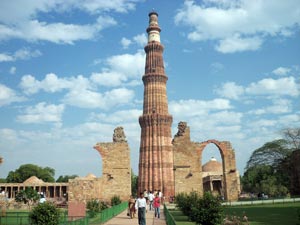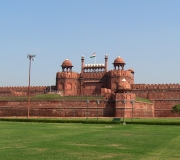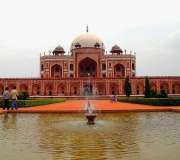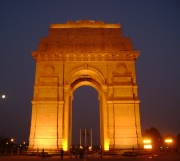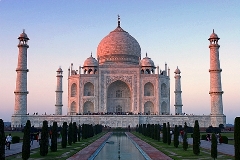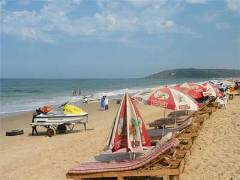#1 India Tours & Travel Agency
Delhi Day ToursSend Enquiry
India Gate :- Built as a memorial to commemorate the 70,000 India soldiers killed in World War I, India Gate was designed by Sir Edwin Lutyens and completed in 1931.
Built from sandstone, the arch also houses the Eternal Flame, a gesture in memory of the Indian soldiers who laid their lives in the 1971 war with Pakistan.
Rashtrapati Bhawan:-
Formely the Viceregal Lodge, the building is the highlight of Lutyen's New Delhi and was completed in 1929 at a cost of 12,53,000 pound sterling. Located in an area of 130 hectares, the palace has 340 rooms.
Red Fort:-
So called because of the red stone with which it is built, the Red Fort is one of the most magnificent palaces in the world. India's history is also closely linked with this fort. It was frorth here ht the British deposed the last Mughal ruler, Bhadur Shah Zafar, marking the end of the three century long Mughal rule. It was also fromits ramparts that the first prime. Minister of India, pandit Jawharlal Nehru, announced to the nation that India was free form colonial rule.
Qutub Minar:-
The origins of Qutab Minar are shrouded in controversy. Some believe it was erected as a tower of victory to signify the beginning of the Muslim rule in India. Others say it served as a minaret to the muezzins to call the faithful to prayer. No one can, however, dispute that the tower is not only one of the finest monuments in India, but also in the world.
Purana Quila:-
The fort is said to be constructed on the historic site of Indraprastha (900BC) by Humayun and Sher Shah. Covering a circuit of about a mile, the walls of the fort have three gates and are surrounded by a mat fed by the river Yamuna.
Delhi Day Tour Package
1 Day & 1 Night
Places to visit: Red Fort, Jama Masjid, Chandni Chowk, Rajghat, Jantar Mantar, Feroz Shah Kotla Fort, Rashtrapati Bhawan, India Gate, Humayu n's Tomb, Qutub Minar and Lotus Temple.
Includes:-
- Transportation
- Air conditioned spacious rooms, Welcome Drink Upon Arrival.
- Use of swimming pool, Use of Gymnasium & Children's Play area, TV with cable connection.
Hotel Stay | |
Meals | |
local sightseeing |
Culture & Heritage Tours
- Rajasthan Heritage Tours
- Khajuraho Tours
- Taj Mahal Tours
- Golden Triangle Tours
- Temple Tours
- Tribal Tours
- Village Tours
- Fair & Festival Tours
- Unesco Heritage Tours
- Food Safari
- Yoga Tours
- Bollywood Tours

